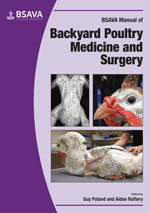
Full text loading...

Feather and skin diseases, especially parasitism, are common reasons for poultry owners to contact a veterinary surgeon. Feather and skin disorders are often accorded an importance out of proportion with their clinical significance. This chapter discusses the management of feather and skin disorders, including conditions of the wattle, beak, feet and claws.
Disorders of the integument, Page 1 of 1
< Previous page | Next page > /docserver/preview/fulltext/10.22233/9781910443194/9781910443194.13-1.gif

Full text loading...














